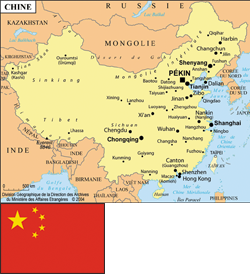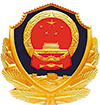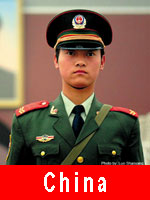
People’s Armed Police Force
|
1949/1982 Attachment authorities: Internal Security Troops operating under the dual auspices of the State Affairs Council and the Central Army Commission. Troops in charge of the borders’ control, the fight against the fires and the protection of the personalities placed under the Public Security Ministry direction. Workforce: 930 000 from both entities joined together. Contact information: Headquarters: Army general WANG Ning, commander-in-chief Of the People's Armed Police - N°1 Xisanhuan Beilu, Beijing 100089, China – The Senior colonel WANG Chunyu’s phone number, Head of the international relations office, is (8610) 68793136, fax (8610) 68414681 PAP Forces integrated into the Public Security Ministry: Minister of Public Health GUO Shengkun - n°14 Dông Chang An Street, Beijing 100741, China - The International Cooperation Direction Europe Office Chief WANG gang’s phone number is (8610) 66263141, and the fax number is (8610) 58186022 Website: http://wj.81.cn/ 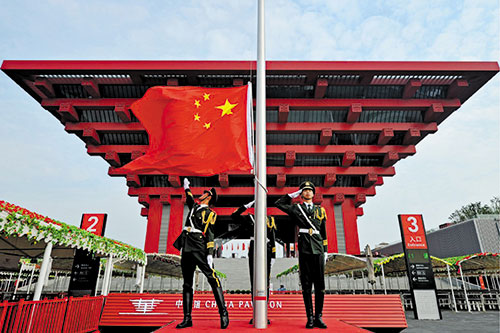
|
History
The People’s Army Police (PAP) was officially created on June the 19th, 1982. However, its origin goes back to the foundation of the People’s Republic of China in 1949. Initially designed as a Public Security Corps depending on the Popular Army of Liberation (PAL), its organization and its naming constantly evolved. In 1966, during the Cultural Revolution, the corps is dismantled. Its internal security and guard on the borders missions are assigned to the PAL and to the Militia (PAL Reserve Force).
At the end of the 1970’s, the need to be equipped with a specific force dedicated to the internal security missions reappears. The new PAP is officially created on June the 19th, 1982. Its workforce consists of diverse units coming from the PAL. In 1983, it integrates the PAL Police Unit n° 772 in charge of the hostage taking (this unit will give rise in 1985 to the PAP special police School, renamed Special Police College in 2002). In 1985, it is joined by the Army Border Defence and the Fires-fighting troops which depend on Public Security Ministry.
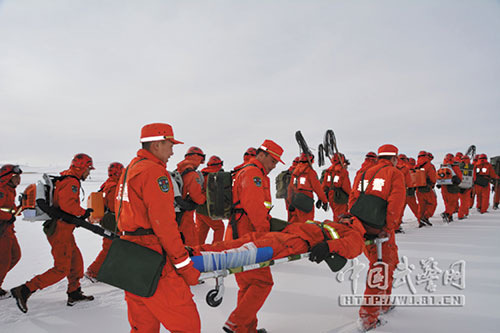
Following the 1989 events and the Tiananmen Square demonstration bloody repression by the PAL, the central authorities decide to specialize the PAP in the armed answer in front of internal protests and favour its modernization. The stake for the political power is to have a loyal and disciplined armed force, able of answering the main political and social disorders connected to urban reforms difficulties, to dissatisfactions of campaigns and to separatist claims.
From the years 1990s, the PAP becomes the regime internal military wing. Its system of relatively decentralized command is replaced in 1993 by a much more centralized and military system, controlled at the same time by the Central Army Commission and the State Affairs Council.
Strengthened and profoundly modernized, the PAP is strongly involved from 1993 in the Tibetan riots repression, then in 1997 in that of Ouïghours during the Yining events in Xinjiang.
In 1996, the PAP creates 14 mobile divisions from 14 infantry divisions demobilized by the PAL, directly placed under Beijing authority in order to intervene immediately on any crisis situation or riots all over the Chinese territory.
Following the 2009 Urumqi violence having made officially 200 deaths (violence which followed upon those of Lhasa in 2008) and the criticisms emitted towards the PAP regarding its slowness to answer the riots, a law on the Popular Armed Police is adopted on 27th August 2009 in order to clarify the frame of its intervention and its authorities of employment in case of riots, of terrorist attacks or of emergency situation. By this law, it is finally put an end to the local authorities’ power at the counties level to mobilize the PAP in order to handle the difficulties as regards public order and avoid so an abusive, excessive and uncontrolled recourse to the law enforcement use.
Organization
Two ministries of regroupment:
• double supervision of the State Affairs Council (government) and the central Army Commission (organ depending on the Chinese communist party, the real heart of the Chinese military power) for the Internal Security Troops (maintenance of law and order, intervention), and the specialized troops (military engineering), that is 680 000 servicemen;
• Department of Public Safety Direction (DPSD) for the troops in charge of the control of the borders, the fire fighting and the Personalities’ protection, that is 250 000 among which 100 000 fire brigades, 100 000 border guards and 50 000 guards in charge of personalities.
Central Organization
• Supreme headquarters: located in Beijing, it consists of a general staff, three departments (political, logistic, equipment) and of four specialized commands (gold-bearing prospecting, road construction, hydroelectric construction, forest surveillance).
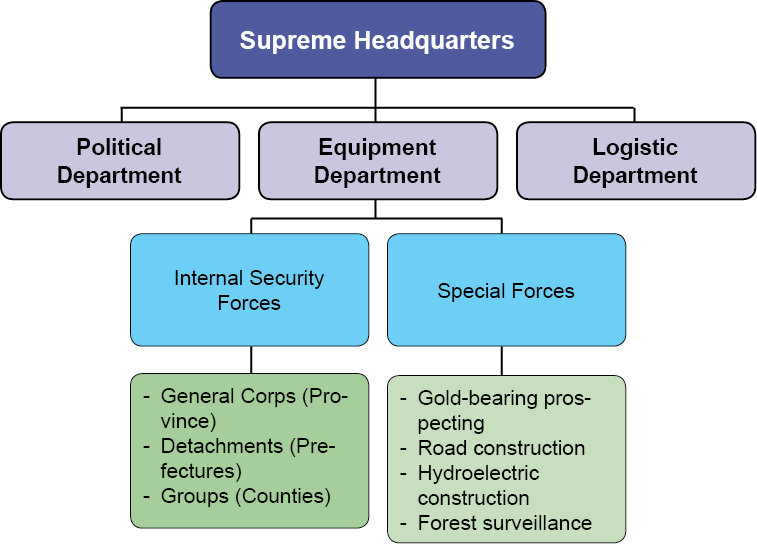
• DPSD Public Security Forces: At the central level, three General Directions within the Public Safety ministry located in Beijing, in charge of the fire fighting, the control of certain borders (including maritime borders) and the high personalities’ protection.
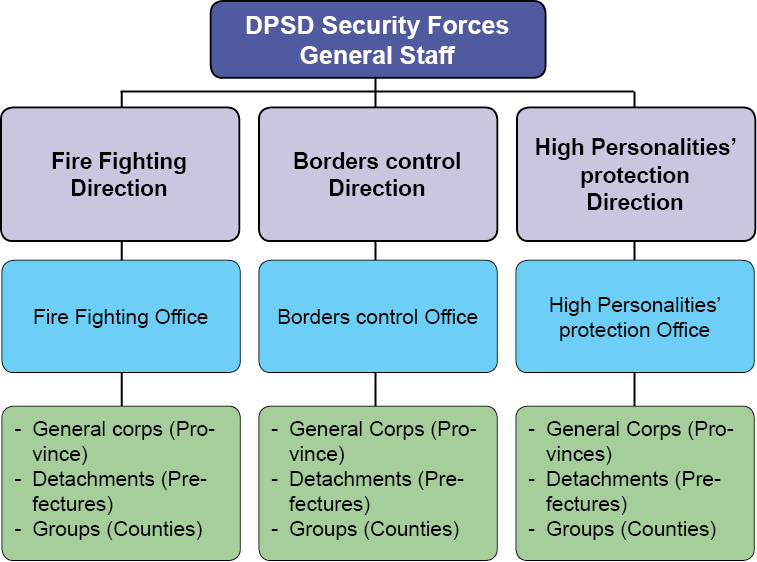
Territorial organization
• Supreme headquarters (SHQ): at the territorial level, the command comes in general corps at the provinces level (Brigades), in Detachments at the prefectures level (Regiments) and in groups at the counties level (Squadrons).
• DPSD Public Security Forces: at the territorial level, the administrative organization takes back that of the national level, but comes in Public Security Office with an office in charge of the fires, an office in charge of the borders control and an office in charge of the personalities’ protection. From the point of view of the military organization, the units come in general corps (brigade at province level), detachments (regiments at prefecture level) and Group (squadron at county level).
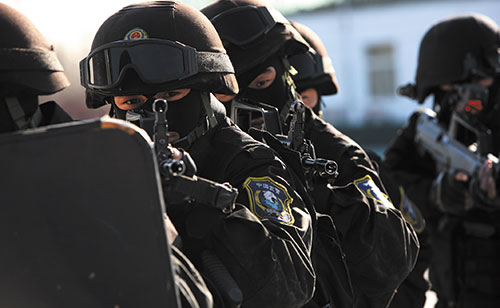
Specialized Training
• Gold-bearing prospecting Forces.
• Road construction Forces.
• Hydroelectric Dams Construction Forces.
• Forests and natural spaces Forces.
Missions
• Internal Security Forces (ISF): regarding administrative police, the PAP insures the preservation and the restoring of the order, the counter-terrorism, the population protection and rescue in case of disasters and the protection of public and diplomatic buildings as well as points of vital importance. Support for the Popular Army of Liberation (PAL) units in case of conflict (Territory Operational Defence). The PAP does not carry on either Criminal Investigation missions, or traffic police missions.
• Public Security Forces depending on the DPSD: Fire-fighting, ground and maritime borders controls, high personalities’ protection.
• Specialized Forces: Gold-bearing prospecting surveillance and control, road construction surveillance and control, hydroelectric dams construction and surveillance, forests and natural spaces surveillance.
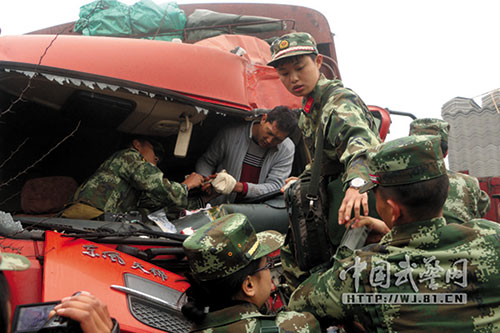
Staff
Total strength: 930 000 servicemen among whom:
• 680 000 servicemen depending on the headquarters;
• 250 000 servicemen (100 000 fire brigades, 100 000 borders’ guards; and 50 000 guards of personalities) depending on the DPSD.
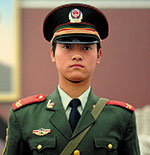 The staff has a military status. The recruitment is made on examination for the officers and the non-commissioned officers, or by commitment for the enlisted men and the non-commissioned officers. The staff lives in military barracks.
The staff has a military status. The recruitment is made on examination for the officers and the non-commissioned officers, or by commitment for the enlisted men and the non-commissioned officers. The staff lives in military barracks.
Conscripts serve in the PAP. Every year, the male citizens over 18 years of age, before 31st December, must be conscripted. Those who are not enlisted that very year can be recruited for an active service before 22 years age. The active service lasts two years. At the expiration of this deadline, the soldiers of service can become voluntary soldiers.
The women are present since the creation.
Training institutions
• Schools of the Forces depending on ISF:
- Initial training at the provincial level,
- In-service training schools: Tianjin academy of the command for the mid level rank officers (Captain, Major),
- National Defence University (equivalent of the French CHEM – Military High Study Centre) for the officers with high potential;
• Schools of the Public Security Forces depending on the DPSD:
- Initial training schools at the provinces level,
- In-Service Training school at the national level to the Langfang academy for three corps (fire brigades, border guards, personalities’ protection).
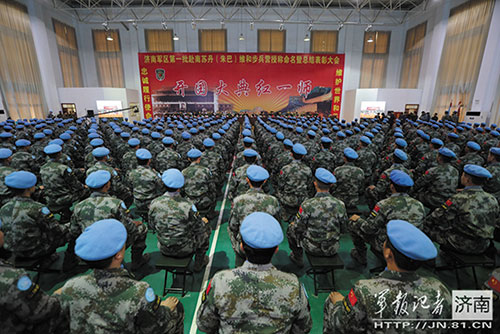
Main equipment
• Armament: light armament, grenades and standard teargas thrower, mortars.
• Vehicles:
- Internal Security Forces: light armoured cars for maintenance of law and order missions with 30 mm gun, trucks thrower of water,
- Specialized troops: construction equipment machines,
- Public Security Troops: fire brigades equipped with fire fighting modern machines.
• Aerials means: helicopters.
• Nautical means: fleet of boats for the surveillance at sea.
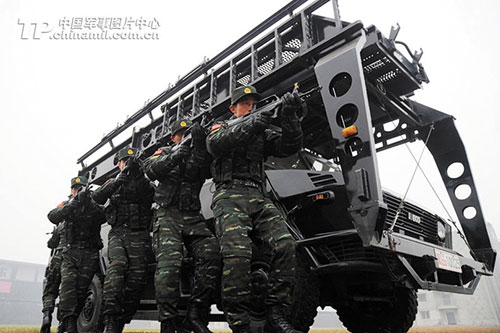
Cooperation
The cooperation with the French Gendarmerie dates from 2005. This one is relatively important (annual trainees in the French Gendarmerie Force Training National Centre (FGFTN or in French "CNEFG"), Training Courses in the French National Gendarmerie Intervention Group (FNGI or in French "GIGN"), the Linguistic Training, participation in seminars in China, regular high-level visits). There is also a strong cooperation with Russia, a significant cooperation with Romania and more modest with Spain, Italy and Portugal.
Regarding military missions, the PAP has been committed since 2000 in UNO peacekeeping mission. The peacekeeping missions training school of Langfang has been recognized by United Nations.
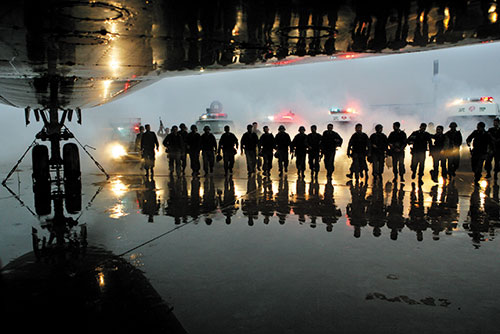
© The iconography was provided by the concerned gendarmeries

